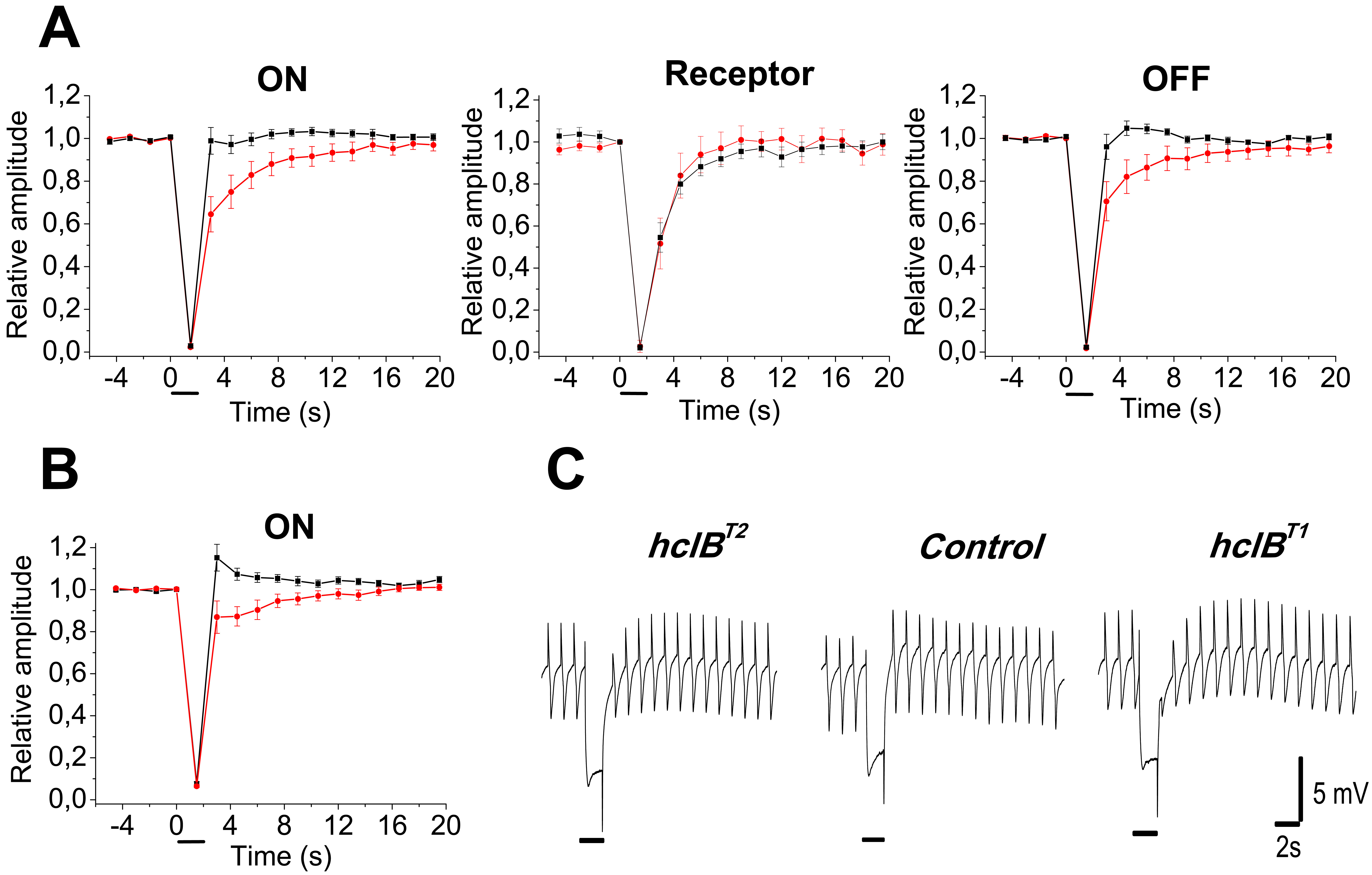Figure 5. Dynamics of dark
sensitivity recovery after short-term light adaptation. A
continuous series of 0.3 s stimuli was presented in the dark.
Short-time light adaptation was achieved by using 2 s adapting
stimuli (denoted by bars under the time scale). A:
Dynamics of sensitivity recovery of the ON transient (left), ERG
receptor component (in the middle) and OFF transient (right) in
the wild-type flies (black squares; n=17), and hclBT2
null mutant (red circles; n=15). Test stimulus intensity It)=4.73
log quanta s−1 μm−2; background intensity
Ib)=6.66 log quanta s−1 μm−2.
While instant sensitivity recovery of the ON and OFF transients
is seen in wild-type flies, the sensitivity recovery in the hclBT2
mutants is delayed (two way analysis of variance [ANOVA],
p=7.42.10−10 for the ON response and p=6.8.10−8
for the OFF response in these particular conditions). B:
Postadaptational potentiation of the ON transient in the
wild-type-flies (n=22) obtained using the following combination
of test and adapting stimuli: It=4.73 log quanta s−1
μm−2, Ib=6.16 log quanta s−1 μm−2.
Postadaptational potentiation is lacking in the hclBT2
(n=19) mutant flies. All labels are as in A. C:
Original electroretinogram (ERG) records, obtained from a
wild-type control fly (in the middle), hclBT2
mutant (on the left), and hclBT1 mutant (on
the right). Stimulation conditions are as in B, In the
first few seconds after the termination of the 2 s
light-adapting stimulus, a postadaptational potentiation is seen
in the wild-type fly, while a delayed sensitivity recovery is
seen in the two mutants.

 Figure 5
of Kupenova, Mol Vis 2012; 18:2497-2508.
Figure 5
of Kupenova, Mol Vis 2012; 18:2497-2508.  Figure 5
of Kupenova, Mol Vis 2012; 18:2497-2508.
Figure 5
of Kupenova, Mol Vis 2012; 18:2497-2508. 